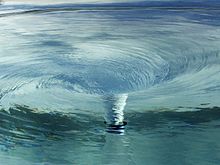Announcements
Welcome to Charms 401!
Please read the following FAQs before joining the class:
When will my assignment be graded?
Charms receives a high volume of assignments submitted each day, and our team is composed entirely of volunteers with real-world obligations. We will not prioritize your assignment over anyone elses. I ask that you be understanding and patient.
If you look in your gradebook, you will be able to see where your assignment is in the grading queue. If you notice that your assignment has not moved at all in the queue after a week, then you may message Professor Laurel to look into the issue.
What do I do if I have a question about an assignment?
Please feel free to reach out to any of our PAs with your questions! Just remember: 1. PAs will never give you the answer to a question. They are here to assist you in completing your work; not to do your work for you. 2. If you have any questions or need help, it is always best to ask before you submit your assignment! Keep in mind: Blank answers are an automatic zero; it is better to always try your best!
If you have a question about an assignment that has already been submitted, please send a private owl directly to Professor Laurel along with your Grade ID for the assignment (this can be found in your gradebook).
If you have any other questions or comments, please do not hesitate to reach out to Professor Laurel!
Lesson 7) Water Charms
I hope you all enjoyed your first lesson on substantive charms! I do hope you enjoy learning about them! Let’s move on now to liquid relating charming.
Liquid Charms
Liquids are similar to the gases we learned about last class because they too can change shape depending on the container you put them in. If you put water into a circular glass, for example, it will arrange itself into a circular shape, while water in a square glass will form into a square. Unlike gases, however, liquids cannot be compressed. Adding more pressure to a liquid in a sealed container will not make it fit any better. This creates some interesting effects in water charms, as you’ll see below with the Liquid-Parting Charm.
Liquid-Parting Charm
Incantation: Vibaku (vee-BAK-ooh)
Wand Movement: Jab forward then upward.
Willpower: Medium to high; Determines how much liquid can be parted and how far it will part.
Concentration: Medium; The liquid (usually a small body of water) and the areas where it should be parted. Continue focusing on the water to keep it parted.
Category: Dynamic.
The Liquid-Parting Charm causes a liquid to separate or withdraw from an area or object. It can be considered a more powerful version of the Water-Repelling Charm, as it will work not only on dripping water but also on an object or area submerged in water. However, the Water-Repelling Charm requires low concentration, so those who need only some protection will likely opt for it so they can focus on other things. A particularly powerful casting of this spell may be able to temporarily give the caster a pathway through a body of water, though that would quickly become exhausting.

This incantation is unique because it comes from Ancient Hebrew rather than Latin, suggesting a longer history to the spell than to many others you’ve learned. This would also explain the spell’s unusual power and versatility, since the magic developed and used back then, as you’ve learned, was in some respects much more powerful than what we have developed since.
The spell can work on any liquid, but it is more effective on liquids that are less viscous (meaning liquids that flow faster and easier) and rather ineffective on any sort of enchanted water. The charm can also be used to separate different liquids, though that is a much more difficult technique requiring intense focus and finesse.
Above is an image of a particularly beautiful and talented use of the spell during the 215th Annual Spellcasting Competition in Honolulu, Hawaii a few years ago. You can see that a tunnel has been created through moving water; rather than building up on one side of the tunnel, the un-compressable water instead escapes over the tunnel in a wave.
Liquid particles are packed more tightly than air particles, and thus offer much more resistance if you push against them. For those of you who swim, this is how you move yourself in the water: you push back against the water, which in turn pushes you forward. While it is possible to do this with air particles, it requires much more force and fast moving air (think Muggle airplane).
Moreover, unlike solids, liquids are loose enough to part around you and let you move through them continuously. You can push against a solid wall, for example, but only away from it. If you were to try moving through it, you’d end up in the infirmary with some broken bones or bruises, as those who unsuccessfully try to get through the barrier to Platform Nine and Three-Quarters can testify...
This particular property of liquid particles – packed just tightly enough to let you both push against them and move through them – is important for the next spell we will learn today.
Fountain Charm
Incantation: Silano (sil-AHN-oh)
Wand Movement: Straight jab in the direction to propel the water.
Willpower: Medium to high; determines how forcefully you push the water.
Concentration: Medium; Visualize the water moving past your wand at great speed. Continue focusing on the water moving past your wand.
Category: Dynamic.
The Fountain Charm works by gathering any water around your wand and propelling it with substantial speed in the direction your wand is pointing. This can be used to create a fountain-like effect if the water is propelled upward into air. The spell is also very useful for moving yourself through water, since using it will generate a force pushing you in the opposite direction. If cast with your wand pointing straight in the air, it creates a very pretty rain-like effect!
The spell can only be used when your wand is actually submerged or touching water (and not any other liquids), but don’t underestimate its usefulness. Now as much as we wish we could, one would not have enough willpower to move a boat,even a small one. It would simply be too much for one person to manage alone. If you are with a group if people, you might be able to accomplish moving a small boat. You would all need to submerge your wands and brace yourselves against the boat in order to move. With enough willpower and continued concentration, you could perhaps push the boat at a few knots, about as fast as a person jogging. However this would be very difficult and is not a recommended mode of transport.
Whirlpool Charm
Incantation: Vorago (vor-AH-go)
Wand Movement: Continuous circles moving your wand closer and farther from the body. The direction in which you make the the circles will be the direction of the whirlpool’s spin.
Willpower: Medium to high; Determines the force of the moving water and, together with the concentration and other environmental factors, the size of the whirlpool.
Concentration: Moderate; The location where the whirlpool should occur. Visualize a whirlpool at the target location.
Category: Static.
The Whirlpool Charm, also called the Water Vortex Charm, is used to create whirlpools of various sizes at a target location. The caster need not be in the water to use the charm, but must be able to point their wand at the target location. The whirlpool is created by rapidly spinning the water in the area around a central point.

The spell can be used on any unenchanted liquid, though it is easier to use on liquids that are less viscous. The size of the vortex created depends primarily on concentration and willpower, though larger vortices require more liquid to work. It is quite difficult to create a whirlpool large enough to pull something person-sized underwater, but it can be done, so please be very careful with this spell.
Underwater Spellcasting
Casting spells underwater is not too different from casting them above the water, though it can be a scary experience for some the first time they do it. The big differences between ordinary spellcasting and submerged spellcasting are in the physical components of the spells: wand movement and incantation. We’ll focus on those today.
When you first cast a spell underwater, you’ll notice the water dragging you more than air would, slowing your movements down and making it harder to start and stop moving. Moreover, if you’re free-floating, then any movement you make with your wand-arm will cause the rest of your body to start moving in the opposite direction.
When speaking the incantation, your mouth will fill with water and your words will be distorted as they come out, even to your own ears. The distorted sounds will actually have very little effect on the magic itself if they’re still spoken correctly. However, if you can’t hear your own words, it can be tough to say the incantation correctly and precisely.
These are real problems, and not ones you could handle in your earlier years of study. However, I trust that you are now quite adept at spellcasting and can handle some challenges when you cannot work perfectly with all components. Remember, too, that you aren’t completely losing these components (though we aren’t far off from that), but rather working with them in a slightly impaired manner.
Your wand movements should remain precise, if a little slower and less forceful. You’ll need to account for your changing body position as well if you’re casting a spell that requires more than a quick jab. This typically won’t be too much compensation, but spells with complex wand movements may require you to reorient yourself before casting them.
You should practice your incantation before entering the water to ensure that you say it precisely, since you will not be able to tell once you’re underwater. You also need to remember that water coming into your mouth is perfectly alright and normal, just try not to swallow any.
Underwater casting is a skill that can be performed with occasional success even without practice, but practice is, of course, the key to developing this particular skill.
Assignments
In addition to the usual worksheet, your job this week will be to practice the charms you learned today and document that practice in a story, lab report, or analytical paper. This essay will be the longest you’ll have to write this year and is not optional. For those of you who do not know how to swim, there will be several supervised sessions in the shallows of the Black Lake for you to practice. You may also find a different, more convenient body of water (such as a nearby swimming pool, lake, or even bath tub) to practice in. Have fun with this assignment, and enjoy the practice!
Image credit: Weird News Files, Wikipedia
- CHRM-301
Enroll


